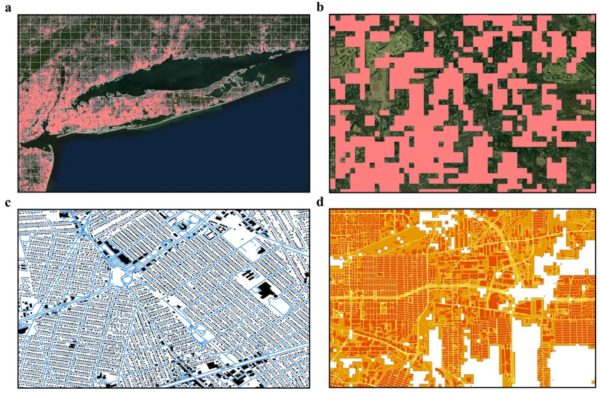The United States has enough usable rooftop space to deploy an amount of solar equal to its current nationwide generation levels, according to recent research on global photovoltaic potential. Researchers at Ireland’s University of Cork leveraged big data, machine learning, and geospatial analysis to reach their findings, which were published in Nature Communications.
In the report, about 77,000 square miles of rooftop area worldwide was demarcated as usable PV surface area (for context, the state of Florida is roughly 65,000 square miles). The researchers said this area could result the production of 27 petawatt-hours, or 27 million GWh, if completely covered by conventional photovoltaics.
This level of potential energy would exceed 2018 total global electricity consumption, a year in which 6 petawatt-hours (PWh) of electricity was consumed by homes alone, and over 23 PWh consumed in total globally, per Statista.com.
The report further said that rooftops in the United States could host enough capacity to produce an annual 4.2 PWh per year, effectively matching the nation’s current total energy output of about 4 PWh per year.
In 2020, about 60% of U.S. electric generation came from fossil fuels, and roughly 20% each from nuclear and renewable energy sources, according to data from the Energy Information Administration (EIA). EIA estimated that the U.S. additionally produced 42 billion kWh of electricity from distributed, small-scale solar, about 1% of total generation. Large-scale solar accounted for 2.2% of total generation that year.
The authors of the paper in Nature Communications said there are mitigating factors in this potential PV outlook, including constraints around transmission, and the need for storage due to the intermittent generation cycles of solar energy.

Image: Nature
This high potential for rooftop solar may come as good news for American ratepayers, as it may put some savings back in their pockets. Recently, it was estimated by Local Solar for All that collectively $109 billion in utility bill payments could be avoided by 2030 if rooftop solar were to scale up 2-4 times faster, vs. an all-utility-scale solar deployment scenario.
The report is an important talisman to wield for those who are concerned about energy sprawl, or the development of land for energy generation. A study by Clemson University showed that in the U.S., including spacing and zoning requirements, roughly 500,000 square miles of land would need to be dedicated to new energy development by 2040, an area larger than Texas. Rooftops represent an alternative to using up otherwise useful lands.
(Read: “Solar in uncommon spaces“)
“The open data generated in this research helps to quantify, locate and prioritize investment in zero-carbon electricity systems,” said study coauthor James Glynn, senior researcher at Columbia University.
Potential costs for rooftop solar across the globe were also evaluated in the Nature Communications paper, and it was found that costs range depending on location. The lowest per-megawatt-hour costs were in China ($68) and India ($66), and the highest costs were in the U.K. ($251) and the U.S. ($238).
This content is protected by copyright and may not be reused. If you want to cooperate with us and would like to reuse some of our content, please contact: editors@pv-magazine.com.









Yes, but how does the U.S. or a state get there?
Mandate putting solar on roofs?
Even reasonably PV-friendly Massachusetts has residential+commercial roof coverage which amounts to only 4% of PV-suitable roof area for the best towns. Some towns, like our own, only have 1%.
I am confused. If roof top would need an area somewhat larger than Florida, why does, essentially, ground mount, (utility), need space as large as Texas? Remember this, if you are worried about consuming land mass, it is much easier to “wipe” a solar farm and return it to its former state than to do the same with a sub-division.
See
https://web.stanford.edu/group/efmh/jacobson/Articles/I/CountriesWWS.pdf
https://www.nature.com/articles/s41598-021-82042-5
and, in particular,
https://drive.google.com/file/d/1GYUurD2_xb9iAyWKVVozebXFWODZ_YJv/view?usp=sharing
from the first.
It is not widely appreciated, but large scale builds of wind turbine clusters at sea and on land, and big solar parks all produce a direct cooling effect upon atmosphere. Also, large robust wind turbines at sea steal energy from storms and can moderate them.